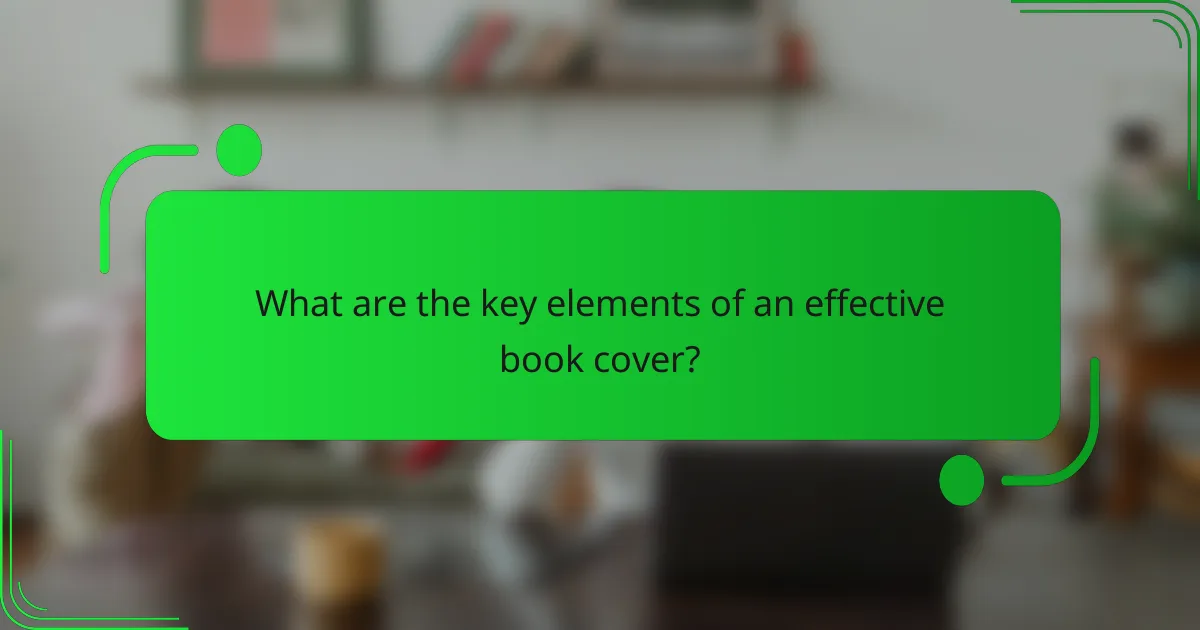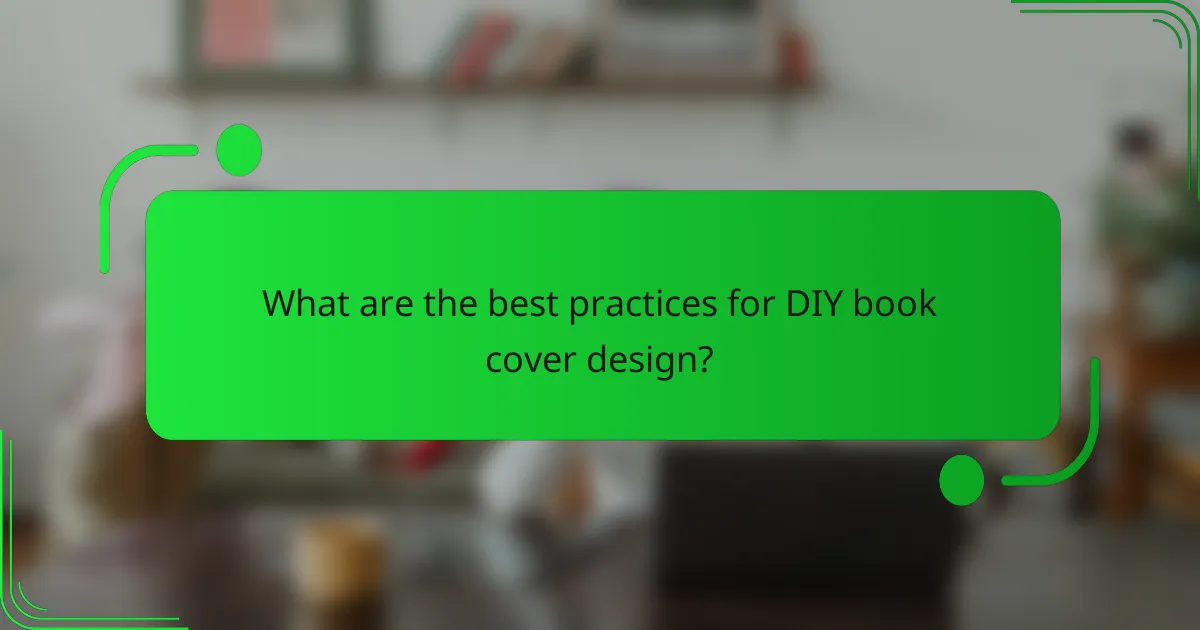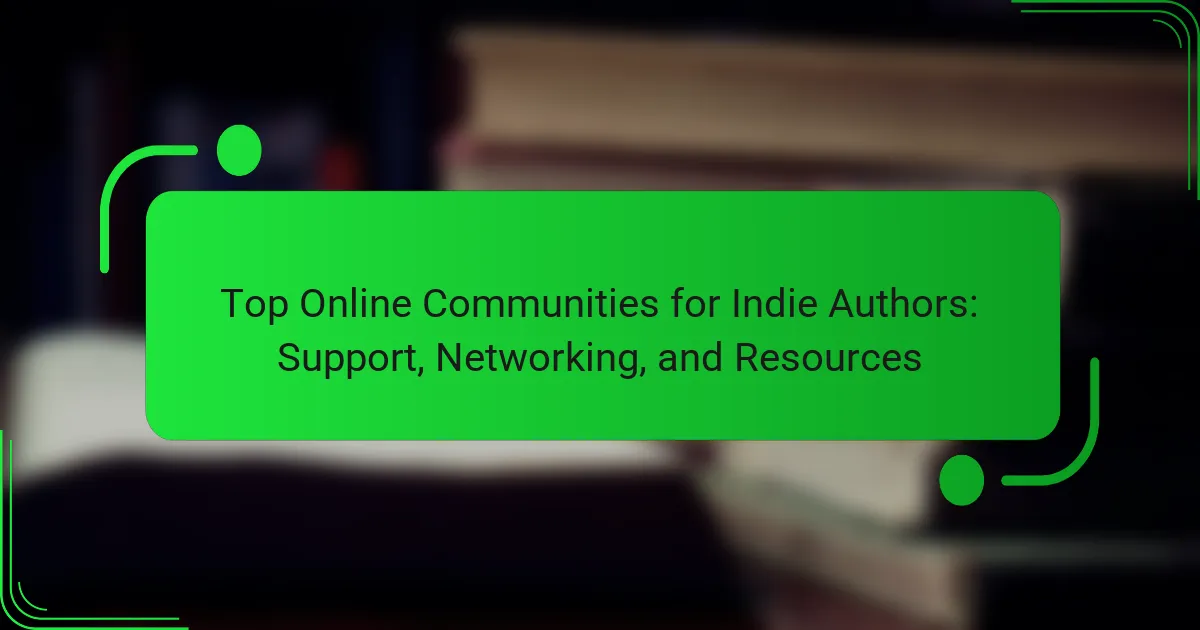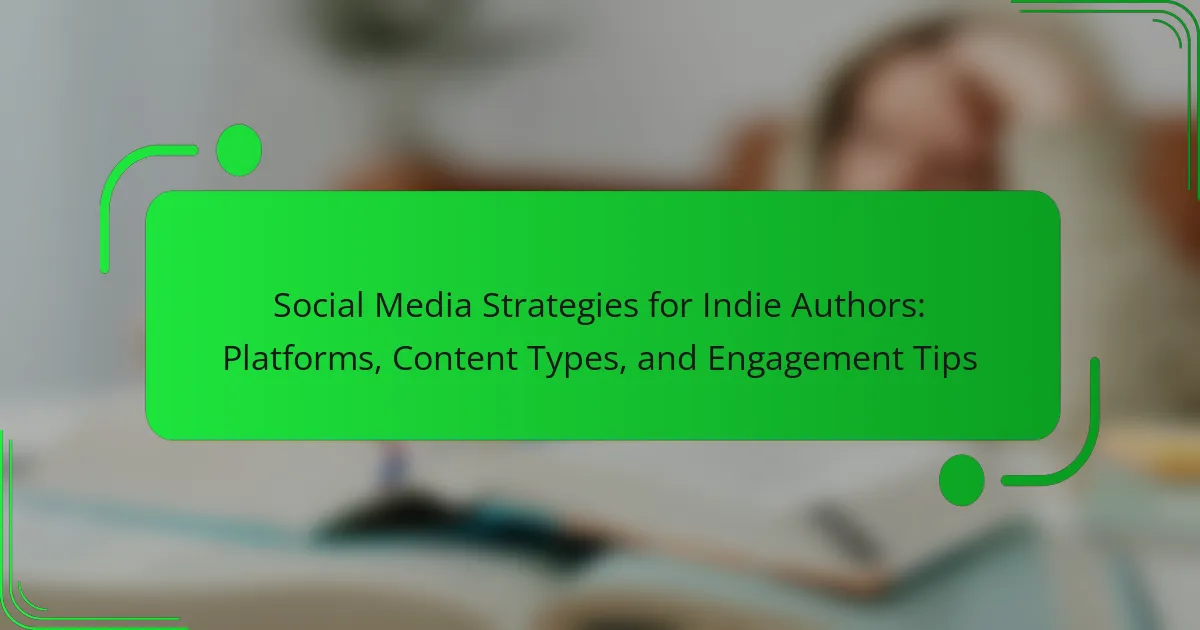Creating an eye-catching DIY book cover is essential for indie authors to attract readers. This article explores essential tools like Adobe Photoshop and Canva, key design elements for visual appeal and genre alignment, and strategies to ensure your cover stands out. Learn how to incorporate unique design features, utilize professional resources, and gather feedback to refine your cover effectively.

What are the essential tools for DIY book cover design?
Essential tools for DIY book cover design include graphic design software, online templates, and stock image resources. Programs like Adobe Photoshop and Canva provide versatile design capabilities. Online platforms like BookCoverZone offer pre-made templates tailored for indie authors. Additionally, stock image sites such as Unsplash and Shutterstock supply high-quality visuals to enhance cover designs. These tools empower authors to create professional-looking covers that attract readers.
Which software options are popular among indie authors?
Popular software options among indie authors for DIY book cover design include Canva, Adobe Spark, GIMP, and Affinity Designer. These tools offer user-friendly interfaces and various templates, making it easier for authors to create professional-looking covers without extensive design experience. Canva provides a wide range of customizable templates, while GIMP is a powerful free alternative for more advanced users. Adobe Spark allows for quick design projects, and Affinity Designer offers robust features for detailed work. Each option caters to different skill levels and design needs.
How do online design platforms compare for book cover creation?
Online design platforms for book cover creation vary in features, usability, and cost. Canva offers user-friendly templates and a free tier, while Adobe Spark provides advanced design tools but requires a subscription. Visme combines infographics with cover design, appealing to visual storytellers. BookCoverZone specializes in book-specific templates, while Placeit allows for mockup creation. Each platform caters to different author needs, balancing ease of use and design flexibility.
What are the benefits of using templates versus custom designs?
Using templates offers efficiency and consistency, while custom designs provide uniqueness and personalization. Templates streamline the design process, saving time for indie authors. Custom designs allow for tailored visuals that align with an author’s specific vision. Templates often come with pre-set layouts and elements, making them user-friendly. Custom designs can reflect an author’s unique voice, potentially enhancing marketability. Ultimately, the choice depends on the author’s priorities: speed versus individuality.
Which resources can help authors improve their design skills?
Authors can enhance their design skills through various resources. Online platforms like Canva and Adobe Spark offer user-friendly tools for creating book covers. Additionally, courses on platforms such as Skillshare and Udemy provide structured learning on design principles. Books on graphic design can also serve as valuable references. Engaging with design communities on social media can offer inspiration and feedback.

What are the key elements of an effective book cover?
An effective book cover includes a compelling design, clear title, and engaging imagery. Key elements are visual appeal, genre alignment, and readability. The cover should reflect the book’s content and attract the target audience. Unique attributes like custom illustrations or typography can enhance differentiation in a crowded market.
How does color psychology influence book cover design?
Color psychology significantly impacts book cover design by influencing reader emotions and perceptions. Different colors evoke specific feelings; for example, blue conveys trust, while red evokes excitement. Indie authors should select colors that align with their book’s theme and target audience. Research indicates that 93% of consumers make purchasing decisions based on visual appearance, highlighting the importance of effective color choices. By understanding color associations, authors can create covers that attract and resonate with potential readers.
What role does typography play in attracting readers?
Typography significantly influences reader attraction by enhancing visual appeal and readability. Effective typography establishes a strong first impression, guiding the reader’s eye and creating a sense of professionalism. Key attributes include font choice, size, spacing, and color, which collectively impact the overall aesthetic and clarity of a book cover. For indie authors, selecting a unique font that reflects the genre can differentiate their work, while maintaining legibility ensures accessibility. As a result, thoughtful typography not only attracts attention but also encourages potential readers to engage with the content.
How can imagery enhance the book’s theme and message?
Imagery enhances a book’s theme and message by creating visual connections that resonate with readers. Effective visuals can evoke emotions, illustrate key concepts, and reinforce the narrative tone. For indie authors, choosing imagery that aligns with the book’s core message is essential. Strong imagery can also attract potential readers by making the cover visually appealing, thereby increasing engagement and interest in the book.
What are the common design mistakes to avoid?
To avoid common design mistakes in DIY book cover design, focus on clarity, balance, and originality. Poor typography, cluttered layouts, and low-quality images can detract from the book’s appeal. Ensure your cover reflects the genre and target audience. Avoid using too many colors or fonts, as this can create visual chaos. Remember, a professional-looking cover enhances credibility and attracts readers.

How can indie authors ensure their book cover stands out?
Indie authors can ensure their book cover stands out by focusing on unique design elements, professional tools, and effective marketing strategies. Utilize design platforms like Canva or Adobe Spark for high-quality visuals. Incorporate eye-catching typography and contrasting colors to draw attention. Research current trends while maintaining a unique style to differentiate your work. Seek feedback from beta readers or design communities to refine your cover.
What unique design trends are emerging in 2025?
In 2025, unique design trends for DIY book covers will focus on minimalism, bold typography, and interactive elements. Indie authors are increasingly adopting clean designs that emphasize simplicity and readability. Vibrant colors paired with striking fonts will dominate, enhancing visual appeal. Additionally, augmented reality features may emerge, allowing readers to interact with the cover through their devices.
How can cultural influences shape book cover aesthetics?
Cultural influences significantly shape book cover aesthetics by reflecting societal values and visual preferences. Design elements like color, typography, and imagery often draw from cultural symbols and traditions. For instance, vibrant colors may resonate with cultures that celebrate boldness, while minimalistic designs may appeal to those valuing simplicity. Additionally, cultural narratives and historical contexts inform the choice of themes and styles, making covers relatable to specific audiences. Understanding these influences helps indie authors create covers that resonate with their target readers, enhancing marketability.
Which niche markets require specific design considerations?
Niche markets for DIY book cover design require specific considerations to effectively appeal to target audiences. Indie authors must focus on genre-specific aesthetics, ensuring that design elements align with reader expectations. For example, a romance cover may prioritize soft colors and elegant typography, while a thriller might use bold fonts and darker imagery. Additionally, understanding print versus digital formats is crucial, as each has different design constraints. Lastly, cultural nuances should be considered to resonate with diverse readerships.

What are the best practices for DIY book cover design?
To create an effective DIY book cover, focus on clarity, visual appeal, and genre alignment. Use design tools like Canva or Adobe Spark for user-friendly templates. Prioritize high-resolution images and readable fonts. Ensure the cover reflects the book’s themes and audience expectations. Test designs with potential readers for feedback.
How can authors gather feedback on their designs?
Authors can gather feedback on their designs through surveys, beta reader groups, and social media. Surveys allow targeted questions to assess design effectiveness. Beta reader groups provide in-depth insights from a select audience. Social media platforms enable broader feedback from diverse viewers, enhancing design refinement. Engaging with these channels helps authors understand audience preferences and improve their book cover designs.
What are the steps to finalize a book cover for publication?
To finalize a book cover for publication, follow these essential steps:
1. Gather feedback from beta readers and peers on your initial designs.
2. Choose the right dimensions and format based on your publishing platform.
3. Ensure your cover design aligns with genre conventions and target audience preferences.
4. Finalize typography, ensuring readability and visual appeal.
5. Save your cover in the appropriate file format and resolution for print or digital use.
6. Conduct a final review to check for any errors or inconsistencies before submission.
How can authors optimize their covers for online platforms?
Authors can optimize their covers for online platforms by focusing on visual appeal, clarity, and genre alignment. Use high-resolution images and legible fonts to ensure readability at thumbnail sizes. Consider color schemes that evoke the right emotions and attract target readers. Test designs across various devices to ensure consistent appearance. Finally, adhere to platform-specific guidelines for dimensions and file formats to enhance discoverability.
What resources are available for ongoing learning and improvement?
Numerous resources are available for ongoing learning and improvement in DIY book cover design. Online courses and tutorials, such as those found on platforms like Udemy and Skillshare, offer structured learning experiences. Design software, including Canva and Adobe Spark, provide templates and tools for creating professional covers. Blogs and forums dedicated to indie publishing share tips and best practices from experienced authors. Networking with fellow indie authors through social media groups can also facilitate knowledge exchange and feedback.



